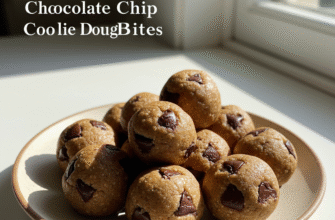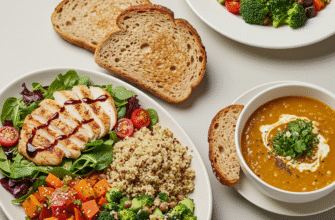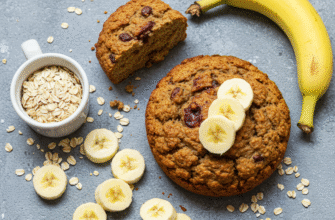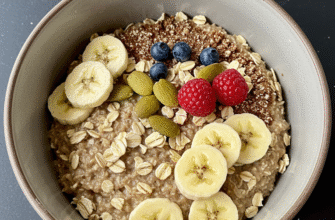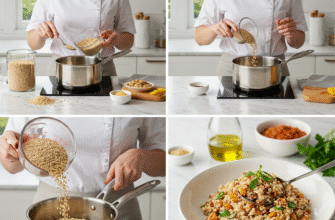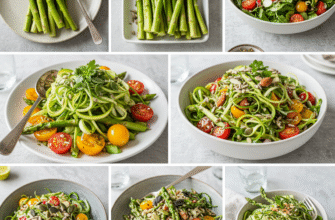Venturing into the world of alternative flours can feel like stepping into a whole new kitchen universe, and oat flour is a wonderfully welcoming gateway. It’s not some obscure ingredient you have to hunt down; chances are, you might even have the makings of it in your pantry right now (hello, rolled oats!). Baking with oat flour opens up possibilities for tender textures, a subtle nutty sweetness, and baked goods that feel just a little more wholesome without sacrificing enjoyment.
So, what exactly is oat flour? Simply put, it’s oats – usually rolled oats – ground down into a fine powder. You can buy it pre-packaged, often certified gluten-free, or whip it up yourself in minutes using a high-speed blender or food processor. This accessibility makes it a fantastic starting point if you’re curious about moving beyond traditional wheat flour.
Understanding Oat Flour’s Personality in Baking
Every flour behaves differently, and oat flour is no exception. Its most defining characteristic, especially compared to all-purpose wheat flour, is its lack of gluten. Gluten is the protein network that gives traditional baked goods structure, elasticity, and chew. Since oats don’t contain gluten (though be mindful of cross-contamination if strict gluten-free is needed – always look for certified gluten-free oats and flour), baking with 100% oat flour yields different results.
Without gluten, oat flour baked goods tend to be more tender and delicate. They might crumble more easily than their wheat-based counterparts. Oat flour is also quite absorbent. It soaks up liquid readily, which can lead to denser results if you’re not careful, but also contributes to incredibly moist muffins, cakes, and quick breads. The flavour is another key difference – oat flour imparts a mild, slightly sweet, and distinctly oaty taste that complements flavours like cinnamon, vanilla, maple, nuts, and fruit beautifully.
Tips for Substituting Oat Flour
Ready to experiment? Replacing wheat flour with oat flour isn’t always a straight one-to-one swap, especially in recipes relying heavily on gluten for structure, like traditional yeast breads. Here are some pointers to get you started:
- Start Small: If you’re new to oat flour, begin by replacing just a portion of the all-purpose flour in your favourite recipes. Try substituting 25-30% of the wheat flour with oat flour by weight (using a kitchen scale is highly recommended for accuracy with different flours). This lets you introduce the flavour and tenderness of oats without drastically altering the structure.
- Consider the Recipe: Oat flour shines in recipes where tenderness and moisture are desired, and a super structured crumb isn’t the main goal. Think cookies, muffins, pancakes, waffles, quick breads, and some cakes. It’s less ideal for airy sourdough or chewy artisan loaves unless combined with other structure-building flours or binders.
- Weight vs. Volume: Oat flour is lighter than all-purpose flour. If measuring by volume (cups), you might need slightly more oat flour than the recipe calls for in wheat flour. However, for consistent results, baking by weight is the gold standard. Generally, 1 cup of all-purpose flour weighs around 120-125 grams, while 1 cup of oat flour weighs closer to 90-100 grams. Use the weight specified in the original recipe if possible, substituting gram for gram.
- Add a Binder (Sometimes): For recipes needing more structure when using a high percentage of oat flour, consider adding a binder like psyllium husk, xanthan gum (use sparingly!), flax eggs (ground flaxseed mixed with water), or chia eggs. Even an extra egg can sometimes help bind things together.
- Expect Texture Changes: Embrace the difference! Oat flour cookies might be chewier and flatter. Oat flour muffins might be denser and moister. It’s not about perfectly replicating the original; it’s about creating something new and delicious in its own right.
Important Note on Liquids: Remember that oat flour is thirsty! It tends to absorb more liquid than wheat flour. You might find you need to slightly increase the wet ingredients (milk, water, oil) in your recipe, or let the batter rest for 10-15 minutes before baking to allow the oat flour to fully hydrate. This helps prevent a dry or overly dense outcome.
Where Oat Flour Truly Shines
While you can incorporate oat flour into many things, some baked goods seem tailor-made for its unique properties.
Cookies
Oat flour works wonders in cookies, contributing chewiness and that lovely oaty flavour. It pairs exceptionally well with classic oatmeal cookie ingredients like raisins, chocolate chips, and nuts. You can often substitute a significant portion, or even all, of the all-purpose flour in many standard cookie recipes, adjusting liquid slightly if needed. Expect a slightly less crisp cookie, leaning more towards soft and chewy.
Muffins and Quick Breads
This is where oat flour’s moisture-retaining ability becomes a huge asset. Muffins, scones, and quick breads (like banana bread or zucchini bread) made with oat flour (either partially or fully substituted) are often incredibly tender and stay moist for longer. The subtle sweetness complements fruits, spices, and nuts perfectly. Because they don’t rely on gluten for a huge rise, the substitution is often very successful.
Pancakes and Waffles
Using oat flour in pancakes and waffles results in fluffy, tender breakfast treats with a wholesome flavour. You can often substitute 100% oat flour here, perhaps adding a little extra liquid if the batter seems too thick. They cook up beautifully golden and are delicious served with maple syrup, fruit, or yogurt.
DIY Oat Flour: Easier Than You Think
Making your own oat flour is incredibly simple and cost-effective, especially if you already buy rolled oats (old-fashioned or quick-cooking work, but avoid steel-cut oats).
- Choose Your Oats: Use plain rolled oats or quick oats. Ensure they are certified gluten-free if that’s a requirement for you or those you’re baking for.
- Blend: Place the oats in a high-speed blender or food processor.
- Process: Blend on high speed for about 30 seconds to 1 minute, stopping occasionally to scrape down the sides if needed. Continue processing until the oats are ground into a fine, powdery flour. It should resemble the texture of whole wheat flour.
- Sift (Optional but Recommended): For the finest texture in delicate baked goods like cakes, sift the flour after blending to remove any larger, stubborn oat pieces.
- Store: Store your homemade oat flour in an airtight container at room temperature for up to a month, or in the freezer for longer storage (up to 3-4 months) to maintain freshness, as the natural oils in oats can go rancid over time.
Making it yourself ensures you know exactly what’s in it and gives you fresh flour whenever you need it.
Embrace the Experiment
Baking with oat flour is less about rigid rules and more about exploration. Pay attention to your batter’s consistency, don’t be afraid to make small adjustments, and enjoy the process. It adds a lovely, subtle complexity and tenderness to baked goods that’s hard to beat. Whether you’re looking for gluten-free options, wanting to add more whole grains, or simply curious about new flavours and textures, oat flour is a versatile and rewarding ingredient to welcome into your baking repertoire. Give it a try in your next batch of muffins or cookies – you might be surprised how much you enjoy the delicious results!

